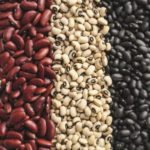20 interesting facts about grapes
 An incredible number of different dishes, desserts and drinks are made from grapes. This plant has spread throughout the world, and it is cultivated in almost all countries whose climate is suitable for its cultivation. There are very, very many varieties of it, and all of them are quite different from each other in size, taste and content of nutrients.
An incredible number of different dishes, desserts and drinks are made from grapes. This plant has spread throughout the world, and it is cultivated in almost all countries whose climate is suitable for its cultivation. There are very, very many varieties of it, and all of them are quite different from each other in size, taste and content of nutrients.
In Latin, “grape” means “vinifera”. Therefore, it was in his honor that the Vinifer asteroid discovered in the last century was named.
It has been established for certain that the ancient Egyptians cultivated grapes in the Nile Delta as early as the 6th millennium BC.
By the content of nutrients, grape flesh is inferior to the skin of these berries.
Fresh, but not washed grapes sometimes seem a little whitish, fluffy. In fact, this plaque is a colony of microorganisms.
Light grape varieties are inferior to dark ones in the content of useful substances.
Specialists divide all the numerous grape varieties into four groups, depending on the color of the berries – red, pink, black and white.
The production of one standard bottle of wine takes about six hundred berries.
Parsley helps the vines to protect themselves from insects, so they are often planted in vineyards.
Russian vineyards were badly damaged by deforestation in Soviet times, when during the time of the anti-alcohol company they were actively destroyed.
Grapes were depicted on coins by representatives of various countries in ancient times.
The number of grape varieties is not calculable, since more and more new ones are constantly being developed. In total there are now about 10 to 20 thousand.
Grapes are considered a symbol of Armenia. True, unofficial. Really great wines are made in this country.
With proper care, vines can grow and bear fruit for hundreds of years. The oldest of them is still growing in the Slovenian city of Maribor.
Tartaric acid, it is also a food supplement E334, is actually a completely natural product. It is made from the leaves and shoots of this plant.
Growing grapes leaves virtually no waste. The latter go to the production of a variety of substances, including tar and various natural dyes, and various oils are made from seeds.
Some grape varieties are valued not for the fruits, but for the beauty of the vines. They are grown for decorative purposes.
Popular seedless grape varieties can only be propagated with the help of humans.
In ordinary berries of this plant, on average, from 2 to 4 seeds are contained.
The length of the vine in favorable conditions can reach thirty to forty meters.
In many dishes, for example, cabbage rolls, cabbage leaves can be safely replaced with grape.



























